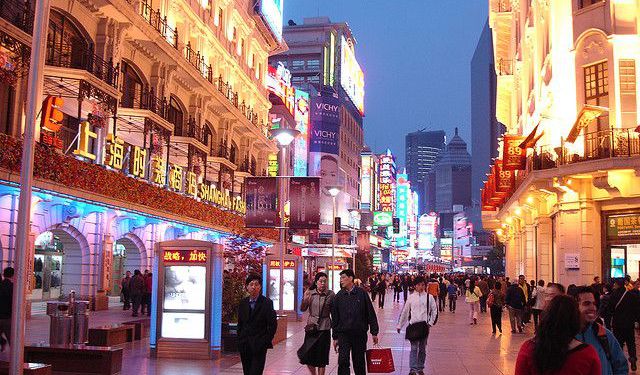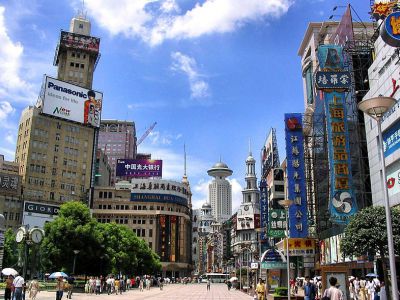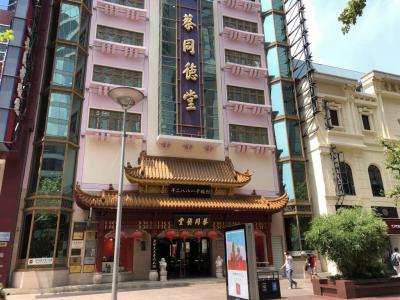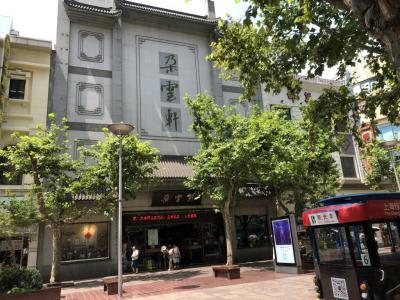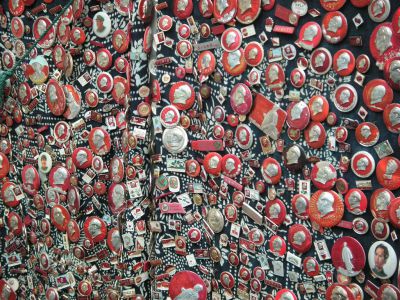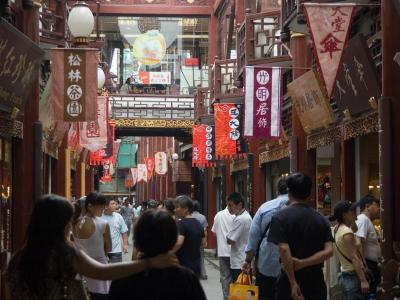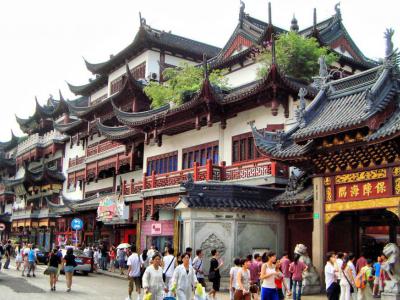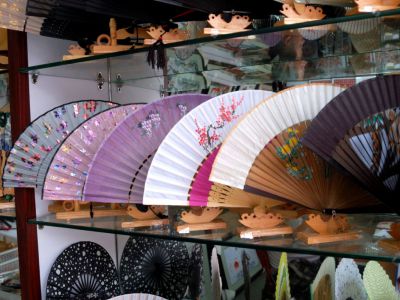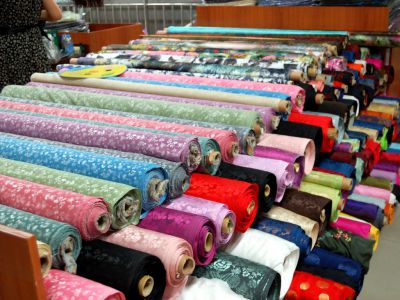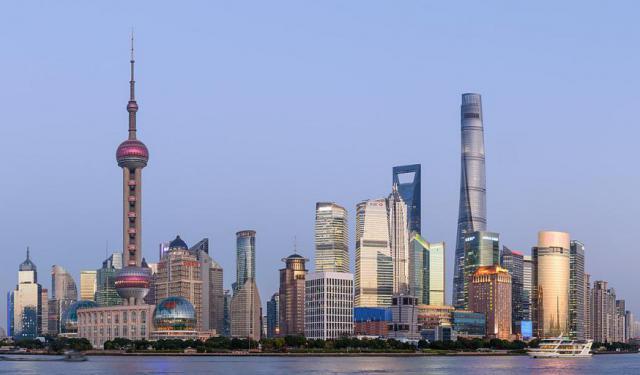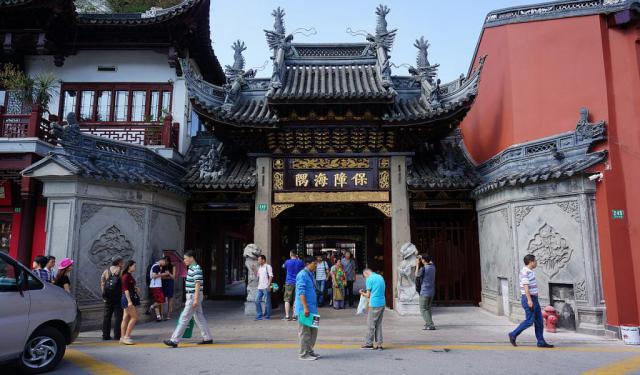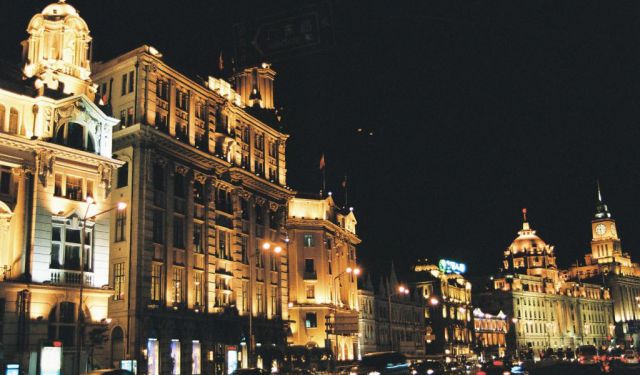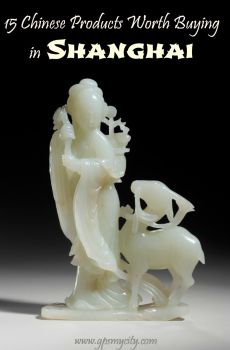Souvenirs Shopping Walk (Self Guided), Shanghai
Leaving Shanghai without calling local shops and procuring something truly original to bring home as a souvenir would be a pity. Indeed, souvenir shopping in Shanghai is an exciting experience.
Nanjing Road, commonly known as Nanjing Lu – Asia's longest and perhaps most famous thoroughfare – is a popular destination in Shanghai. Here, you can find a plethora of shops and boutiques selling everything, from clothing and accessories to electronics and souvenirs. It's a bustling place, perfect for picking up trinkets and gifts.
If you're interested in traditional Chinese medicine and herbal remedies, a visit to Cai Tong De Pharmacy is highly recommended. This pharmacy has a long history and offers a variety of herbs, teas, and remedies that are not only great for health but also make for unique mementos.
Art enthusiasts will appreciate the Duoyun Xuan Art Center, showcasing beautiful Chinese paintings, calligraphy, and other artistic creations.
For antique enthusiasts, the Fang Bang Road Indoor Antique Market is a true gem of a place. It's a treasure trove of vintage items, from old furniture to vintage jewelry and collectibles. You can uncover some remarkable finds here.
The Yuyuan Bazaar, located near the famous Yuyuan Garden, is another great spot for souvenir shopping. It carries a wealth of traditional Chinese crafts, including silk products, porcelain, and paper lanterns.
In the heart of Shanghai's Old Town, you can explore the Antiques Market, where you can haggle for authentic Chinese antiques, such as porcelain, jade, and traditional furniture.
And if you're looking for something more interactive, visit the Folding Fan Workshop. Here, you can watch artisans craft exquisite folding fans and even create your personalized fan as a unique keepsake.
Lastly, the Shi Liu Pu Cloth Market is a fantastic place to shop for fabrics and tailor-made clothing. You can choose your favorite fabrics and have garments tailored to your specifications on-site.
As you can imagine now, there's no shortage of souvenir shopping options in Shanghai, each reflecting the city's rich cultural heritage. So, make sure to explore these unique locations and bring back a piece of Shanghai with you as a cherished memory of your visit. Happy shopping!
Nanjing Road, commonly known as Nanjing Lu – Asia's longest and perhaps most famous thoroughfare – is a popular destination in Shanghai. Here, you can find a plethora of shops and boutiques selling everything, from clothing and accessories to electronics and souvenirs. It's a bustling place, perfect for picking up trinkets and gifts.
If you're interested in traditional Chinese medicine and herbal remedies, a visit to Cai Tong De Pharmacy is highly recommended. This pharmacy has a long history and offers a variety of herbs, teas, and remedies that are not only great for health but also make for unique mementos.
Art enthusiasts will appreciate the Duoyun Xuan Art Center, showcasing beautiful Chinese paintings, calligraphy, and other artistic creations.
For antique enthusiasts, the Fang Bang Road Indoor Antique Market is a true gem of a place. It's a treasure trove of vintage items, from old furniture to vintage jewelry and collectibles. You can uncover some remarkable finds here.
The Yuyuan Bazaar, located near the famous Yuyuan Garden, is another great spot for souvenir shopping. It carries a wealth of traditional Chinese crafts, including silk products, porcelain, and paper lanterns.
In the heart of Shanghai's Old Town, you can explore the Antiques Market, where you can haggle for authentic Chinese antiques, such as porcelain, jade, and traditional furniture.
And if you're looking for something more interactive, visit the Folding Fan Workshop. Here, you can watch artisans craft exquisite folding fans and even create your personalized fan as a unique keepsake.
Lastly, the Shi Liu Pu Cloth Market is a fantastic place to shop for fabrics and tailor-made clothing. You can choose your favorite fabrics and have garments tailored to your specifications on-site.
As you can imagine now, there's no shortage of souvenir shopping options in Shanghai, each reflecting the city's rich cultural heritage. So, make sure to explore these unique locations and bring back a piece of Shanghai with you as a cherished memory of your visit. Happy shopping!
How it works: Download the app "GPSmyCity: Walks in 1K+ Cities" from Apple App Store or Google Play Store to your mobile phone or tablet. The app turns your mobile device into a personal tour guide and its built-in GPS navigation functions guide you from one tour stop to next. The app works offline, so no data plan is needed when traveling abroad.
Souvenirs Shopping Walk Map
Guide Name: Souvenirs Shopping Walk
Guide Location: China » Shanghai (See other walking tours in Shanghai)
Guide Type: Self-guided Walking Tour (Sightseeing)
# of Attractions: 8
Tour Duration: 2 Hour(s)
Travel Distance: 3.7 Km or 2.3 Miles
Author: emma
Sight(s) Featured in This Guide:
Guide Location: China » Shanghai (See other walking tours in Shanghai)
Guide Type: Self-guided Walking Tour (Sightseeing)
# of Attractions: 8
Tour Duration: 2 Hour(s)
Travel Distance: 3.7 Km or 2.3 Miles
Author: emma
Sight(s) Featured in This Guide:
- Nanjing Lu (Nanjing Road)
- Cai Tong De Pharmacy (蔡同德堂)
- Duoyun Xuan Art Center
- Fang Bang Road Indoor Antique Market
- Yuyuan Bazaar
- Antiques Market of Shanghai Old Town
- Folding Fan Workshop
- Shi Liu Pu Cloth Market (上海十六铺面料城)
1) Nanjing Lu (Nanjing Road) (must see)
Nanjing Road in Shanghai has long been the city's top shopping destination, attracting more than a million visitors daily. This famous street is divided into two sections: Nanjing East Road and Nanjing West Road. In total, they stretch for nearly 10 kilometers (about 6 miles), making it the world's longest and busiest pedestrian thoroughfare.
Nanjing East Road has held the reputation of being a shopper's paradise since the 1950s or even earlier. Its main attraction is the Shanghai No. 1 Department Store, famous for its eye-catching window displays. Some say it's a great place to browse, but not necessarily the best for finding bargains.
Once the sun sets, Nanjing East Road becomes especially lively, with various malls competing for shoppers' attention through elaborate lighting and countless advertising screens. It seems like they spare no expense when it comes to electricity bills.
Many of the buildings along this road have been standing for over a century, showcasing a unique fusion of Eastern and Western architectural styles that first gained prominence in the 1930s, establishing Shanghai as a significant intermediary between the two civilizations. The newer malls cater to the modern tastes of China's millennials, who are keen on luxury brands.
Unlike other parts of Shanghai, you won't find street vendors or markets on Nanjing Road. Everything here is on a grand scale, including Starbucks. The Starbucks Reserve Roastery, which happens to be the world's largest outlet, spans three floors and serves up to 7,000 customers a day, with seating for up to 1,000 people at once.
Tip:
For ease of travel, mini-trains run up and down half the length of Nanjing Road during day hours – convenient for those wanting to see the area, especially if tired of walking or with kids in tow.
On a foodie note, try the food court in the New World City Plaza. Huge, pretty, and clean, with numerous stores, and good prices. And the LEGO shop on its ground floor is a haven for LEGO lovers.
Nanjing East Road has held the reputation of being a shopper's paradise since the 1950s or even earlier. Its main attraction is the Shanghai No. 1 Department Store, famous for its eye-catching window displays. Some say it's a great place to browse, but not necessarily the best for finding bargains.
Once the sun sets, Nanjing East Road becomes especially lively, with various malls competing for shoppers' attention through elaborate lighting and countless advertising screens. It seems like they spare no expense when it comes to electricity bills.
Many of the buildings along this road have been standing for over a century, showcasing a unique fusion of Eastern and Western architectural styles that first gained prominence in the 1930s, establishing Shanghai as a significant intermediary between the two civilizations. The newer malls cater to the modern tastes of China's millennials, who are keen on luxury brands.
Unlike other parts of Shanghai, you won't find street vendors or markets on Nanjing Road. Everything here is on a grand scale, including Starbucks. The Starbucks Reserve Roastery, which happens to be the world's largest outlet, spans three floors and serves up to 7,000 customers a day, with seating for up to 1,000 people at once.
Tip:
For ease of travel, mini-trains run up and down half the length of Nanjing Road during day hours – convenient for those wanting to see the area, especially if tired of walking or with kids in tow.
On a foodie note, try the food court in the New World City Plaza. Huge, pretty, and clean, with numerous stores, and good prices. And the LEGO shop on its ground floor is a haven for LEGO lovers.
2) Cai Tong De Pharmacy (蔡同德堂)
At 450 East Nanjing Road (Nanjing Dong Lu, 南京东路) there is a fabulous multistorey building devoted to celebrating Traditional Chinese Medicine (TCM). The first two floors are consecrated to healthcare products, both cosmetics and to eat mainly for prevention and well-being, the third floor sells medicines, while the fourth and fifth floors have medical equipment and doctors available for visits.
What to buy here: Traditional Chinese Medicine (TCM) A special souvenir from China is by all means a piece of Traditional Chinese Medicine. TCM is thousands of years old, and strongly relies on the concept that there are natural laws that govern the universe. Humans being part of the universe, they are subject to those laws, and consequently our health is affected by the environment.
Herbal remedies account for the majority of treatments in TCM, but herbs aren't the only ingredients, and roots, grass, furs, animal parts and stones are also used as treatments. Common medicinal plants are Ginger Root, Ginko Biloba and Ginseng.
Ginseng is a popular item to bring from China. Panax ginseng is a dried root dating back to over 5000 years, and if originally was only used as food, it was quickly recognized for its rejuvenating powers and curative properties. Taking ginseng regularly helps maintain and restore cellular function delaying aging effects, it decreases blood sugar levels and balances the metabolism as well as the hormone levels. Prices go from a couple of hundreds Yuan and can reach thousands Yuan.
What to buy here: Traditional Chinese Medicine (TCM) A special souvenir from China is by all means a piece of Traditional Chinese Medicine. TCM is thousands of years old, and strongly relies on the concept that there are natural laws that govern the universe. Humans being part of the universe, they are subject to those laws, and consequently our health is affected by the environment.
Herbal remedies account for the majority of treatments in TCM, but herbs aren't the only ingredients, and roots, grass, furs, animal parts and stones are also used as treatments. Common medicinal plants are Ginger Root, Ginko Biloba and Ginseng.
Ginseng is a popular item to bring from China. Panax ginseng is a dried root dating back to over 5000 years, and if originally was only used as food, it was quickly recognized for its rejuvenating powers and curative properties. Taking ginseng regularly helps maintain and restore cellular function delaying aging effects, it decreases blood sugar levels and balances the metabolism as well as the hormone levels. Prices go from a couple of hundreds Yuan and can reach thousands Yuan.
Image Courtesy of Jim Z..
3) Duoyun Xuan Art Center
If you are into Chinese paintings, make it to Duoyun Xuan Art Center on East Nanjing Road, where you can find works from Zhang Da Qian, Wu Chang Shuo, Jiang Han Ting, Zhou Hui Jun, all big names of Chinese painting scene. There are also works from lesser known Chinese painters. Prices vary, going from RMB3500 to RMB2.,500,000 of a work by Zhang Da Qian.
What to buy here: Chinese paintings. Typical handmade paintings and miniatures of cities, birds, villages, where even the smallest detail has been carefully looked after, are a very classy gift and represent a great homage to Chinese ancient culture. In Shanghai is possible to find galleries selling paintings from famous contemporary and ancient artists as well as small galleries displaying the work of minor painters. It’s possible to find paintings on silk or on canvas, as well as embroidery works that can take from three to six months to be completed.
If you want, you can bring a picture and the artists will copy it in a painting. At a small showroom of local artists prices go from RMB30 to RMB1500, depending on the size and the quality of the material. Landscape painting is considered the highest form, so there are countless canvases picturing spectacular views from all over China, with its rolling hills and mountains to its surreal lakes and rivers.
What to buy here: Chinese paintings. Typical handmade paintings and miniatures of cities, birds, villages, where even the smallest detail has been carefully looked after, are a very classy gift and represent a great homage to Chinese ancient culture. In Shanghai is possible to find galleries selling paintings from famous contemporary and ancient artists as well as small galleries displaying the work of minor painters. It’s possible to find paintings on silk or on canvas, as well as embroidery works that can take from three to six months to be completed.
If you want, you can bring a picture and the artists will copy it in a painting. At a small showroom of local artists prices go from RMB30 to RMB1500, depending on the size and the quality of the material. Landscape painting is considered the highest form, so there are countless canvases picturing spectacular views from all over China, with its rolling hills and mountains to its surreal lakes and rivers.
4) Fang Bang Road Indoor Antique Market
The Fang Bang Road Indoor Antique Market in Shanghai is a distinctive destination for both locals and tourists alike, offering a unique glimpse into the rich tapestry of Chinese culture and history through its diverse array of collectibles and artifacts. This five-story flea market has become a bustling hub of activity, particularly over the weekend. Notably, the market spreads its offerings across three floors regularly, while the weekend market especially thrives on the third and fourth floors, with the latter being exclusively open to small local vendors during these days.
Visitors to the Fang Bang Road Indoor Antique Market are treated to an eclectic selection of items that range from ethnic Yunnan bags to meticulously reproduced traditional furniture, providing a tangible connection to China's diverse cultural heritage. The market is renowned for its extensive collection that includes porcelain items, old jade pendants, used furniture pieces, Qing Dynasty coins, Chairman Mao buttons, old Russian cameras, Buddhist statues, and propaganda posters from the 1950s. Additionally, those with a penchant for nostalgia can sift through boxes of yellowing photographs, each telling its own story of days gone by.
This market is not just a shopping destination but a vibrant cultural experience, attracting a wide array of visitors and vendors from Shanghai and beyond. It offers an unparalleled opportunity for tourists to immerse themselves in the search for authentic artifacts and to learn more about Chinese history and culture through the treasures they find.
Visitors to the Fang Bang Road Indoor Antique Market are treated to an eclectic selection of items that range from ethnic Yunnan bags to meticulously reproduced traditional furniture, providing a tangible connection to China's diverse cultural heritage. The market is renowned for its extensive collection that includes porcelain items, old jade pendants, used furniture pieces, Qing Dynasty coins, Chairman Mao buttons, old Russian cameras, Buddhist statues, and propaganda posters from the 1950s. Additionally, those with a penchant for nostalgia can sift through boxes of yellowing photographs, each telling its own story of days gone by.
This market is not just a shopping destination but a vibrant cultural experience, attracting a wide array of visitors and vendors from Shanghai and beyond. It offers an unparalleled opportunity for tourists to immerse themselves in the search for authentic artifacts and to learn more about Chinese history and culture through the treasures they find.
5) Yuyuan Bazaar (must see)
Regularly packed with locals and tourists, this busy shopping area – located just outside the famous Yuyuan Gardens – is a good chance to get a glimpse of Shanghai's everyday life. Amid the plethora of goods on sale – including fresh produce, second-hand stuff, antiques and handicrafts – the most intriguing, perhaps, are the countless food offerings whose vendors seemingly compete with each other. The vast majority of them specialize in dumplings of every imaginable filling; they even have dumplings filled with soup and served with a straw. The Nanxiang Shanghai steamed buns are pretty good on a chilly day either, and there's a long but well-organized queue for them in the central courtyard.
On the whole, this new-looking Ming-style bazaar is a cacophony of shops, street performers, sedan-chair rides and swarms of people everywhere. It covers an area of over 50 hectares and houses almost 3,000 shops and nearly 10,000 vendors. Among them are souvenir shops with tonnes of fine gift ideas, from painted snuff bottles and delightful Chinese kites to embroidered and clever palm-and-finger paintings.
As with any shopping in Asia, haggling skills are quite handy here, especially if you've done your homework on products and prices previously. Another good thing is to buy as the locals buy, particularly women, who certainly know where the best deals are.
Why You Should Visit:
No matter how commercialized, this is still a pretty sight to behold. Only in China!
Tip:
Other than the bazaar itself, there are a few spots just behind the Yuyan Gardens on Fuyou Street where you can find things at wholesale prices. In particular, if you're after household items, check out the Fuyou Street Merchandise Mart – similar to WalMart in the U.S., but in a fraction of the space it usually occupies there. Bargaining here is recommended, but the prices aren’t too high to begin with – just perfect for those on a budget.
On the whole, this new-looking Ming-style bazaar is a cacophony of shops, street performers, sedan-chair rides and swarms of people everywhere. It covers an area of over 50 hectares and houses almost 3,000 shops and nearly 10,000 vendors. Among them are souvenir shops with tonnes of fine gift ideas, from painted snuff bottles and delightful Chinese kites to embroidered and clever palm-and-finger paintings.
As with any shopping in Asia, haggling skills are quite handy here, especially if you've done your homework on products and prices previously. Another good thing is to buy as the locals buy, particularly women, who certainly know where the best deals are.
Why You Should Visit:
No matter how commercialized, this is still a pretty sight to behold. Only in China!
Tip:
Other than the bazaar itself, there are a few spots just behind the Yuyan Gardens on Fuyou Street where you can find things at wholesale prices. In particular, if you're after household items, check out the Fuyou Street Merchandise Mart – similar to WalMart in the U.S., but in a fraction of the space it usually occupies there. Bargaining here is recommended, but the prices aren’t too high to begin with – just perfect for those on a budget.
6) Antiques Market of Shanghai Old Town
The Antiques Market of Shanghai Old Town, nestled in the basement of the Huabao building within the bustling Yu Garden Shopping Complex, stands as Shanghai's premier indoor antique market. This sprawling subterranean haven hosts over 200 established antique dealers, creating a labyrinthine treasure trove of historical artifacts and curiosities that echo China's rich and multifaceted past.
A visit to the market is akin to stepping back in time, with each stall and corner brimming with items that tell tales of days gone by. Shoppers can find an eclectic array of merchandise, ranging from intricately embroidered silk jackets and dressing gowns to lustrous freshwater pearls. The market also offers an impressive selection of ceramic tea sets that reflect China's long-standing tea culture, alongside Cultural Revolution posters that capture a pivotal era in the nation's history. Additionally, visitors can discover beautifully crafted wooden fans and painted scrolls, each piece adding to the market's allure as a center for Chinese antiquities and craftsmanship.
The history of this market stretches back to before 1949, preceding the Cultural Revolution of the 1960s and 70s, when it served as a holiday market selling folk antiques and handicrafts. Today, it has evolved into a vibrant destination that attracts tens of thousands of visitors daily, drawn by the vast assortment of goods on offer. The Antiques Market of Shanghai Old Town is not just a place for buying antiques; it's a cultural journey that offers a glimpse into China's storied past, making it a must-visit for locals and tourists alike.
Tip:
Beware – you will definitely have to bring out your haggling skills here! Whatever the price the dealer asks you initially, try to bargain for at least 40% less.
A visit to the market is akin to stepping back in time, with each stall and corner brimming with items that tell tales of days gone by. Shoppers can find an eclectic array of merchandise, ranging from intricately embroidered silk jackets and dressing gowns to lustrous freshwater pearls. The market also offers an impressive selection of ceramic tea sets that reflect China's long-standing tea culture, alongside Cultural Revolution posters that capture a pivotal era in the nation's history. Additionally, visitors can discover beautifully crafted wooden fans and painted scrolls, each piece adding to the market's allure as a center for Chinese antiquities and craftsmanship.
The history of this market stretches back to before 1949, preceding the Cultural Revolution of the 1960s and 70s, when it served as a holiday market selling folk antiques and handicrafts. Today, it has evolved into a vibrant destination that attracts tens of thousands of visitors daily, drawn by the vast assortment of goods on offer. The Antiques Market of Shanghai Old Town is not just a place for buying antiques; it's a cultural journey that offers a glimpse into China's storied past, making it a must-visit for locals and tourists alike.
Tip:
Beware – you will definitely have to bring out your haggling skills here! Whatever the price the dealer asks you initially, try to bargain for at least 40% less.
7) Folding Fan Workshop
Folding hand fans were invented around 7th AD and were introduced to Europe through trade and the Silk Road. For centuries they are a stylish symbol of wealth and class around the world. One can buy a handmade folding fan at a workshop at 140 Jiu Jiao Chang Road (JiuJiaoChang Lu, 旧校场路), a side alley near 337 Middle Fangbang Road (Fangbang Zhong Lu, 方浜中路). There you can even find the artisans at work. You can choose ready fans, order custom ones, and browse their other products such as their beautiful marble and jade stamps.
What to buy here: folding Fans. Symbol of femininity, folding fans were widely used by concubines during the royal periods, both to give some relief during the hottest hours of the day and as an essential accessory to be compared to a piece of jewelry. Today they are still used during the hot summer months, although they are not all as finely decorated as they were in the imperial era.
They are available in very different prices, depending on the quality of the material and if they are handmade. They can be made in silk and hand painted with typical Chinese patterns of nature subjects such as birds, landscapes, mountains, lakes. You can also order it according to your taste and the artisan will make it for you.
What to buy here: folding Fans. Symbol of femininity, folding fans were widely used by concubines during the royal periods, both to give some relief during the hottest hours of the day and as an essential accessory to be compared to a piece of jewelry. Today they are still used during the hot summer months, although they are not all as finely decorated as they were in the imperial era.
They are available in very different prices, depending on the quality of the material and if they are handmade. They can be made in silk and hand painted with typical Chinese patterns of nature subjects such as birds, landscapes, mountains, lakes. You can also order it according to your taste and the artisan will make it for you.
Image Courtesy of Angela Corrias.
8) Shi Liu Pu Cloth Market (上海十六铺面料城)
Apart from the traditional silk, in Shanghai you can find any kind of fabric material at very accessible prices. The best place where to find fabrics of any type are Shi Liu Pu Cloth Market at 168 Dong Men Road. The market is very popular among expats living in Shanghai, and offers a complete choice of any kind of fabric materials.
Entire market is organized and devoted to fabrics, where tourists can buy raw material for sewing or order pieces of clothes or even buy the traditional cheongsam (Chinese dress). Here you will find everything you can search for, not just silk, but also linen, cashmere, mixed fabrics. It’s recommended to bargain, as prices are never fixed but change depending on the day (usually higher on weekends and busy seasons in general) and if you are a first-timer.
Prices vary also depending if the material is bought per meter or the finished product. A silk half linen and half silk is usually RMB250 or the same material around RMB50 per meter. Cashmere is usually more expensive, especially if it comes from Mongolia. A tailor-made dress or a jumper in cashmere can be bought between RMB600 and RMB900.
Entire market is organized and devoted to fabrics, where tourists can buy raw material for sewing or order pieces of clothes or even buy the traditional cheongsam (Chinese dress). Here you will find everything you can search for, not just silk, but also linen, cashmere, mixed fabrics. It’s recommended to bargain, as prices are never fixed but change depending on the day (usually higher on weekends and busy seasons in general) and if you are a first-timer.
Prices vary also depending if the material is bought per meter or the finished product. A silk half linen and half silk is usually RMB250 or the same material around RMB50 per meter. Cashmere is usually more expensive, especially if it comes from Mongolia. A tailor-made dress or a jumper in cashmere can be bought between RMB600 and RMB900.
Image Courtesy of Angela Corrias.
Walking Tours in Shanghai, China
Create Your Own Walk in Shanghai
Creating your own self-guided walk in Shanghai is easy and fun. Choose the city attractions that you want to see and a walk route map will be created just for you. You can even set your hotel as the start point of the walk.
Shanghai Introduction Walking Tour
Perhaps more than any other Chinese city, Shanghai deserves to be called the “face of modern China.” Despite modern look, the city emerged on a map as far back as 751 AD. Shanghai County was established under the Yuan Dynasty in the 13th century, although the city character, as we know it today, began to take shape in the aftermath of the first Opium War in 1842. The post-war treaty opened... view more
Tour Duration: 3 Hour(s)
Travel Distance: 6.2 Km or 3.9 Miles
Tour Duration: 3 Hour(s)
Travel Distance: 6.2 Km or 3.9 Miles
Shanghai Old Town Walking Tour
The Old Town of Shanghai, historically the heart of the city, is a part of Shanghai's urban core. Shanghai's importance as a trade hub led to its elevation to county status in 1292. In 1554, during the Ming Dynasty, the area was surrounded by protective walls to safeguard against Japanese pirate raids and remained so until 1912, when the walls were dismantled.
During the colonial era,... view more
Tour Duration: 2 Hour(s)
Travel Distance: 4.0 Km or 2.5 Miles
During the colonial era,... view more
Tour Duration: 2 Hour(s)
Travel Distance: 4.0 Km or 2.5 Miles
The Bund Sightseeing Tour
The Bund is a waterfront area and a protected historical district in central Shanghai. The term "bund" was borrowed into English from Hindi and originally referred to a dyke or embankment. The Chinese name for the Bund is unrelated in origin: it literally means "outer bank", and distinguishes this part of the riverfront from the "inner bank" adjacent to the Old Town... view more
Tour Duration: 1 Hour(s)
Travel Distance: 1.1 Km or 0.7 Miles
Tour Duration: 1 Hour(s)
Travel Distance: 1.1 Km or 0.7 Miles
Useful Travel Guides for Planning Your Trip
15 Uniquely Chinese Things to Buy in Shanghai
Prepare a Shanghai surprise for your loved ones back home! Bring them a piece of exciting China from one of the country's most iconic destinations. Luckily, the choice of things fit to do the job is enormous. All you need is a knowledgeable advice on where to go to get a fair price and decent...
The Most Popular Cities
/ view all
